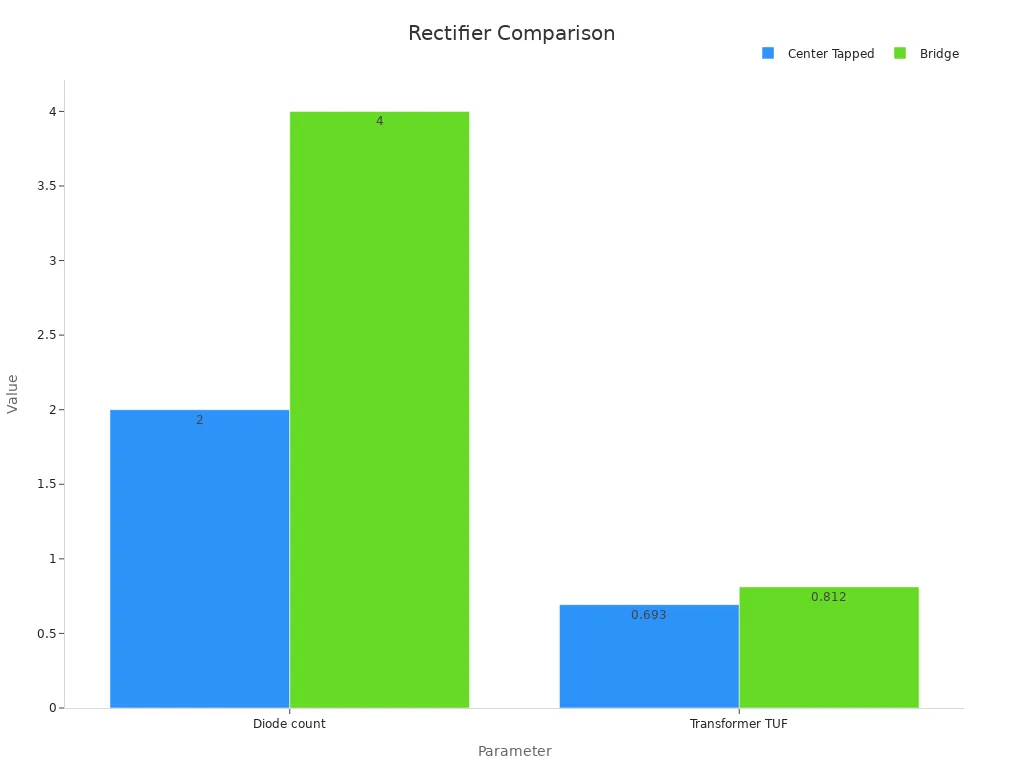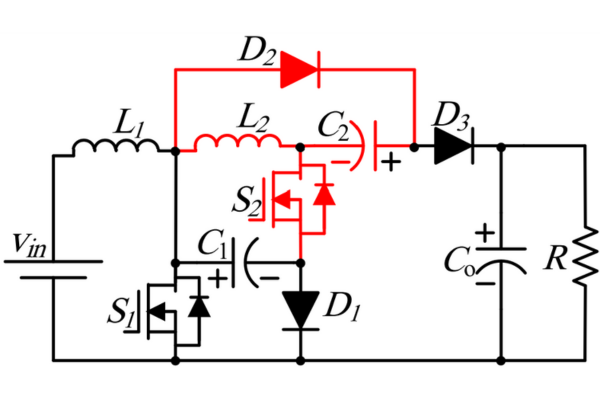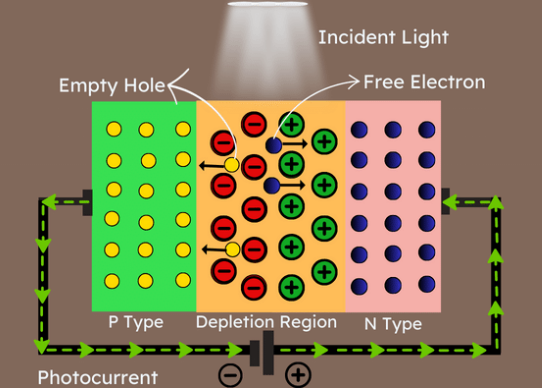Comparing Bridge Rectifiers and Full Wave Rectifiers for Beginners
The main difference between a bridge rectifier and a full wave rectifier comes from their design and efficiency. Bridge rectifiers use four diodes, while a full wave rectifier often uses two diodes with a center-tapped transformer. For beginners, bridge rectifiers offer a straightforward setup. Understanding rectifier types helps increase circuit efficiency. Full wave rectifiers deliver about twice the efficiency of half-wave types, which only reach 40.5%. Higher efficiency means better AC to DC conversion, making rectifiers vital in beginner electronics projects.
What Is a Rectifier?
Simple Definition
A rectifier is an electronic device that changes an ac signal into dc signal. In simple terms, it takes the alternating current (AC) from a power source and converts it into direct current (DC) that electronic devices can use. Most household electronics, like chargers and radios, need DC to work properly. The rectifier acts as a bridge between the power supply and the device, making sure the energy flows in only one direction. This process helps protect sensitive components and ensures steady operation.
There are different types of rectifiers, but they all share the same goal: turning an ac signal into dc signal. Some use just one diode, while others use several diodes arranged in special ways. The most common types include half-wave, full-wave, and bridge rectifiers. Each type has its own advantages and is chosen based on the needs of the circuit.
Why Rectifiers Matter
Rectifiers play a key role in modern electronics. Without a rectifier, many devices would not function safely or efficiently. The demand for reliable rectifiers continues to grow as more industries rely on electronic systems. Market reports show that the global rectifier market reached $7.24 billion in 2024 and is expected to grow to $10.5 billion by 2035. This growth comes from the rise of electric vehicles, renewable energy, and advanced consumer electronics.
| Segment | Value (USD Billion) |
|---|---|
| Global Market Size 2024 | 7.24 |
| Projected Market Size 2035 | 10.5 |
| Power Supply Application 2024 | 2.5 |
| Renewable Energy Application 2024 | 1.2 |
| Consumer Electronics 2024 | 0.79 |
| Asia-Pacific Market 2024 | 3.0 |
Rectifiers also help improve energy efficiency and power quality. New technologies, such as silicon carbide and gallium nitride, make rectifiers more reliable and efficient. Industries use rectifiers to reduce energy waste and keep equipment running smoothly. Statistical methods like MIL-HDBK-217F and FIDES help engineers predict how long a rectifier will last, showing how important these devices are for safe and effective power conversion.
Bridge Rectifiers
What Are Bridge Rectifiers
Bridge rectifiers are a type of rectifier that converts alternating current (AC) into direct current (DC). They use four diodes arranged in a special pattern called a bridge. This design allows the rectifier to use both halves of the AC signal, making it more efficient than a half-wave rectifier. Recent guides and studies show that the diode bridge rectifier is the most common choice for beginners. It does not need a center-tapped transformer, which keeps the design simple and affordable. Many beginner electronics kits and tutorials use bridge rectifiers because they are easy to build and reliable.
| Configuration | Components Used | Efficiency | Complexity | Typical Use in Beginner Projects |
|---|---|---|---|---|
| Diode Bridge Rectifier | Four diodes arranged in a bridge | More efficient | Simpler | Most common due to simplicity and component availability |
| Center-Tapped Full-Wave Rectifier | Two diodes and center-tapped transformer | Less efficient | More complex | Less common due to complexity and transformer requirement |
How Bridge Rectifiers Work
A bridge rectifier works by directing the flow of electricity through its four diodes. When AC voltage enters the circuit, two diodes conduct during the positive half-cycle, and the other two conduct during the negative half-cycle. This process ensures that current always flows in the same direction through the load. The result is a steady DC output. Bridge rectifiers use the entire AC waveform, which increases efficiency and provides a smoother DC output. However, the voltage drops slightly because the current passes through two diodes at a time. This drop is about 1.4 volts, which can create heat and may require a heat sink in some applications.
Tip: Bridge rectifiers do not need a center-tapped transformer, which makes them easier to use in many beginner projects.
Common Uses
Bridge rectifiers appear in many everyday applications. They power adapters for phones and laptops, battery chargers, and small appliances. Many beginner electronics projects use bridge rectifiers to convert AC from a wall outlet into DC for circuits. These rectifiers also work well in power supplies for radios, LED lighting, and hobby kits. Their simple design and reliable performance make bridge rectifiers a popular choice for a wide range of applications.
Full Wave Rectifier
What Is a Full-Wave Rectifier
A full-wave rectifier is a circuit that changes both halves of an alternating current (AC) signal into a direct current (DC) output. This type of rectifier uses either two diodes with a center-tapped transformer or four diodes in a bridge configuration. The main goal is to produce a higher average DC output voltage and reduce the ripple compared to a half-wave rectifier. Recent industry research shows that a full-wave rectifier can deliver about 0.637 times the peak voltage as DC output. For example, if the AC input has a 10 V peak, the DC output after diode drops is about 9.3 V. Smoothing capacitors help make the DC output even more stable by reducing voltage ripple.
How a Full-Wave Rectifier Works
The full wave rectifier uses both the positive and negative halves of the AC cycle. During the positive half, one set of diodes conducts, sending current through the load in one direction. During the negative half, the other set of diodes conducts, but the current still flows in the same direction through the load. This process doubles the frequency of the DC output ripple, making it easier to filter and smooth. Key performance metrics include the peak inverse voltage (PIV), which is the highest reverse voltage a diode can handle, and the ripple factor, which measures how much the DC output fluctuates. Full-wave rectifiers have a lower ripple factor and higher transformer utilization factor (TUF) than half-wave designs. Experimental studies confirm that full-wave rectifiers work efficiently with different types of loads and can adjust output voltage by changing the firing angle in controlled circuits.
| Parameter | Description | Findings |
|---|---|---|
| Output Voltage Performance | Measured peak and RMS voltages in full-wave rectifier circuits using general purpose and Schottky diodes | Schottky diodes showed improved voltage performance; experimental and simulation results aligned |
| Ripple Factor | Ripple factor analyzed as a key parameter affecting output quality | Full-wave rectifiers demonstrated reduced ripple compared to half-wave designs |
| Efficiency | Efficiency influenced by diode type and load conditions | Full-wave rectifiers showed higher efficiency; controlled rectifiers with RL loads confirmed operational modes and efficiency improvements |
| Measurement Methods | Use of voltmeter, oscilloscope, and Multisim simulation | Experimental results validated theoretical models and simulations |
Typical Applications
Full wave rectifiers appear in many electronics projects and devices. They are common in power supplies for radios, televisions, and computers. Many battery chargers and adapters use a full-wave rectifier to provide a steady DC output. The adoption rate of full-wave rectifiers continues to rise, especially in renewable energy systems like solar inverters, electric vehicle charging stations, and industrial automation. Sectors such as telecommunications, healthcare, and data centers rely on these rectifiers for reliable power conversion. The market for three-phase diode full wave bridge rectifiers is growing at over 6% per year, driven by the need for efficient and stable DC output in modern applications. New materials like silicon carbide and gallium nitride help these rectifiers reach efficiency levels above 95%, making them a top choice for advanced electronics.
Note: Full-wave rectifiers help reduce energy waste and improve the stability of DC output in many critical applications.
Key Difference Between Bridge Rectifiers and Full Wave Rectifier
Understanding the key difference between a bridge rectifier and a full wave rectifier helps beginners choose the right circuit for their projects. Both types convert AC to DC output, but they use different numbers of diodes, transformer setups, and have unique electrical characteristics.
Diode Count
A bridge rectifier uses four diodes arranged in a bridge pattern. This setup allows current to flow during both halves of the AC cycle. In contrast, a full wave rectifier with a center-tapped transformer uses only two diodes. The number of diodes affects the voltage drop and the complexity of the circuit.
| Parameter | Center Tapped Full Wave Rectifier | Bridge Rectifier |
|---|---|---|
| Number of Diodes | 2 | 4 |
| Peak Inverse Voltage (PIV) | 2Vm | Vm |
| Transformer Utilization Factor (TUF) | 0.693 | 0.812 |
| Maximum Efficiency | 81.2% | 81.2% |
| Ripple Factor | 0.48 | 0.48 |
| Form Factor | 1.11 | 1.11 |
| Output Frequency | 2f | 2f |
The bridge rectifier requires twice as many diodes as the center-tapped full wave rectifier. This design reduces the stress on each diode because the peak inverse voltage is lower in the bridge circuit.

Transformer Needs
The transformer setup marks another key difference. The full wave rectifier needs a center-tapped transformer, which splits the AC voltage into two equal halves. This requirement can make the transformer larger and more expensive. The bridge rectifier does not need a center tap. It works with a simple transformer or even directly with the AC supply. This feature makes the bridge rectifier easier and cheaper to use in many beginner projects.
Tip: Bridge rectifiers save space and cost by removing the need for a center-tapped transformer.
Voltage Drop and PIV
Voltage drop and peak inverse voltage (PIV) are important when comparing these rectifiers. In a bridge rectifier, current passes through two diodes during each half-cycle, causing a total voltage drop of about 1.4 V (0.7 V per diode). The full wave rectifier with a center tap has current passing through only one diode at a time, so the voltage drop is about 0.7 V. Lower voltage drop means more of the input voltage reaches the load.
The PIV rating tells how much reverse voltage each diode must withstand. In the bridge rectifier, each diode faces a PIV of Vm (the peak voltage). In the full wave rectifier, each diode must handle 2Vm, which means the diodes need to be rated for higher voltages.
| Parameter | Bridge Rectifier | Full-Wave Center-Tapped Rectifier |
|---|---|---|
| Voltage Drop | Approximately 1.4 V | Approximately 0.7 V |
| Ripple Factor | 0.48 | 0.48 |
| Maximum Efficiency | 81.2% | 81.2% |
| Transformer Utilization Factor | 0.8106 | 0.573 |
| Output Frequency | Twice the AC supply frequency (2f) | Twice the AC supply frequency (2f) |
| DC Output Voltage | 2Vm/π | 2Vm/π |

Output and Ripple
Both bridge and full wave rectifiers provide a smoother dc output than half-wave rectifiers. They double the output frequency, which makes it easier to filter out ripples using a capacitor. The ripple factor for both types is 0.48, showing that they produce similar levels of ripple in the dc output. However, the bridge rectifier has a higher transformer utilization factor, meaning it uses the transformer more efficiently.
Experimental data shows that the full wave rectifier reduces ripple voltage by more than half compared to a half-wave rectifier. It also increases the dc output voltage and load current by about 20%. Both rectifiers reach the same maximum efficiency of 81.2%. The dc output voltage for both is about 0.637 times the peak input voltage, after accounting for the voltage drop across the diodes.
Note: Using a larger smoothing capacitor can further reduce ripple in the dc output for both types of rectifiers.
Side-by-Side Comparison Table
| Feature | Bridge Rectifier | Full Wave Rectifier (Center-Tapped) |
|---|---|---|
| Number of Diodes | 4 | 2 |
| Transformer Requirement | No center tap needed | Center tap required |
| Voltage Drop | 1.4 V (two diodes) | 0.7 V (one diode) |
| Peak Inverse Voltage (PIV) | Vm | 2Vm |
| DC Output Voltage | 2Vm/π | 2Vm/π |
| Ripple Factor | 0.48 | 0.48 |
| Efficiency | 81.2% | 81.2% |
| Transformer Utilization | 0.81 | 0.69 |
| Cost | Lower | Higher (due to transformer) |
Summary of Main Technical and Practical Differences
The key difference between these rectifiers lies in the number of diodes and transformer needs. The bridge rectifier uses four diodes and does not need a center-tapped transformer, making it simpler and more cost-effective for beginners.
The full wave rectifier with a center tap uses only two diodes but requires a special transformer, which can increase cost and complexity.
The bridge rectifier has a higher voltage drop because current flows through two diodes, while the full wave rectifier has a lower voltage drop.
Both types deliver similar dc output voltage, ripple, and efficiency, but the bridge rectifier uses the transformer more efficiently.
For most beginner projects, the bridge rectifier offers a smoother dc output, easier assembly, and lower cost.
Pros and Cons for Beginners
Bridge Rectifiers Pros and Cons
Bridge rectifiers offer several advantages for beginners. They do not require a center-tapped transformer, which makes the design simpler and reduces cost. Many starter kits include this type of rectifier because it uses four diodes in a compact arrangement. The transformer utilization factor (TUF) for a bridge rectifier is 0.812, which means it uses the transformer more efficiently than other types. This efficiency helps deliver more power to the load.
Tip: Bridge rectifiers work well in small projects where space and cost matter.
However, bridge rectifiers have some drawbacks. The current passes through two diodes during each half-cycle, causing a higher voltage drop (about 1.4 volts total). This drop can lead to more heat and power loss. In high-power circuits, users may need to add a heat sink to manage the extra heat. The circuit also becomes slightly more complex because it uses four diodes instead of two.
Summary Table: Bridge Rectifier
| Advantage | Disadvantage |
|---|---|
| No center-tapped transformer | Higher voltage drop (1.4 V) |
| High transformer utilization (0.812) | More heat generation |
| Compact and widely available | Slightly more complex circuit |
| Uses both halves of AC waveform | Four diodes required |
Full-Wave Rectifier Pros and Cons
A full-wave rectifier with a center-tapped transformer uses only two diodes. This design results in a lower voltage drop across the diodes, which means less power loss and less heat. The circuit is simpler because it has fewer components. Many learners find this simplicity helpful when first studying rectifiers.
On the other hand, the full-wave rectifier needs a center-tapped transformer. These transformers can be larger and more expensive. The transformer utilization factor is lower (0.692), so the transformer does not work as efficiently as in a bridge rectifier. This lower efficiency can affect the amount of power delivered to the load.
Note: Beginners may find the transformer requirement challenging when building their first circuits.
Summary Table: Full-Wave Rectifier
| Advantage | Disadvantage |
|---|---|
| Lower voltage drop (0.7 V) | Needs center-tapped transformer |
| Fewer diodes (2) | Lower transformer utilization (0.692) |
| Simpler circuit | Transformer can be bulky and costly |
Both types of rectifier have strengths and weaknesses. Beginners should consider the project requirements, available parts, and desired efficiency before choosing.
Which Is Better for Beginners?
Practical Recommendation
Many beginners want a rectifier that is easy to build, reliable, and cost-effective. Bridge rectifiers meet these needs for most starter projects. They do not require a center-tapped transformer, which makes the circuit simpler and less expensive. Most electronics kits include four standard diodes, so beginners can assemble a bridge rectifier with parts they already have. The bridge design also provides good efficiency and a steady DC output, which helps protect sensitive components.
A full-wave rectifier with a center-tapped transformer works well in some cases. It uses only two diodes, which means less voltage drop and less heat. However, the need for a special transformer can make the project more complex and costly. Many beginners find it easier to use a bridge rectifier because it works with a standard transformer or even directly from the AC supply.
Tip: Beginners often choose bridge rectifiers for their first power supply circuits because they are simple and do not need special transformers.
Best Uses
Different rectifier types fit different beginner projects. The table below shows how each type matches common needs:
| Rectifier Type | Diode Count | Efficiency | Ripple Voltage | Best Use Cases in Beginner Projects |
|---|---|---|---|---|
| Half-wave | 1 | Low | High | Simple, low-cost projects; signal detection, battery charging, dimming lamps |
| Full-wave (center-tap or bridge) | 2 or 4 | High | Low | Higher power and better DC quality needed; power supplies, radio receivers, flame detectors |
Beginners often use half-wave rectifiers for basic tasks like signal detection or charging small batteries. These circuits do not need high efficiency or smooth DC output. For projects that need stable and higher quality DC, such as power supplies or radio receivers, a full-wave rectifier or bridge rectifier works best. These designs provide better efficiency and lower ripple voltage, which helps devices run smoothly.
Note: Choosing the right rectifier depends on the project’s power needs and the quality of DC output required.
Bridge rectifiers and full wave rectifiers both convert AC to DC, but they differ in design and ease of use. Bridge rectifiers use four diodes and do not need a center-tapped transformer, making them simpler for beginners. Silicon diodes, often used in these circuits, offer low leakage current, high breakdown voltage, and stable performance.
Maximum rectifier current can reach thousands of amps
Typical forward voltage drop is about 0.7V
Reverse leakage current stays in the nanoampere range
For most beginner projects, bridge rectifiers with silicon diodes provide reliable and easy-to-build solutions. Beginners should match their choice to project needs and keep exploring electronics basics.
FAQ
What is the main purpose of a rectifier?
A rectifier changes alternating current (AC) into direct current (DC). Many electronic devices need DC to work safely and correctly. Rectifiers help provide this steady power.
Can a beginner build a bridge rectifier without special tools?
Yes. Most beginners can build a bridge rectifier using four diodes, a breadboard, and basic wires. No special tools are needed. Many starter kits include all the required parts.
Why does a bridge rectifier use four diodes?
A bridge rectifier uses four diodes to allow current to flow during both halves of the AC cycle. This design helps create a smoother DC output and improves efficiency.
Do both rectifiers need a transformer?
Not always. A bridge rectifier can work without a transformer, but a full-wave rectifier with two diodes needs a center-tapped transformer. Beginners often choose bridge rectifiers for this reason.
Which rectifier gives less ripple in the output?
Both bridge and full-wave rectifiers produce similar ripple levels. Adding a large capacitor after the rectifier can reduce ripple even more. This helps create a smoother DC output for sensitive devices.
 Modeling Wide Band-Gap Semiconductors for Enhanced PerformanceRakesh Kumar, Ph.D.31 January 20243155
Modeling Wide Band-Gap Semiconductors for Enhanced PerformanceRakesh Kumar, Ph.D.31 January 20243155The article delves into the challenges faced by silicon-based power electronic devices and highlights the potential of wide band-gap semiconductors. It also emphasizes the importance of modeling power semiconductor devices and provides insights into various models. For electrical energy conversion to be dependable and effective, power electronics and semiconductor device technologies are essential.
Read More Optimizing Energy Management with Non-Isolated DC-DC ConvertersRakesh Kumar, Ph.D.04 February 20242837
Optimizing Energy Management with Non-Isolated DC-DC ConvertersRakesh Kumar, Ph.D.04 February 20242837The article classifies DC-DC converters and discusses the benefits and limitations of them. It proposes a modified DC-DC converter topology that combines the Cuk and Positive Output Super Lift Luo topologies to achieve a higher voltage gain with fewer components.
Read More ‘6G Networks’ - Pioneering the Next Era of Connectivity And InnovationRakesh Kumar, Ph.D.18 March 20243205
‘6G Networks’ - Pioneering the Next Era of Connectivity And InnovationRakesh Kumar, Ph.D.18 March 20243205The article provides a comprehensive overview of the evolving landscape of mobile networks, the requirements that will shape the future of mobile communication, and the innovative technologies driving the transition to 6G.
Read More Review of IoT-Based Smart Home Security Systems- Part 1Rakesh Kumar, Ph.D.28 March 20243443
Review of IoT-Based Smart Home Security Systems- Part 1Rakesh Kumar, Ph.D.28 March 20243443The article discusses the evolution of IoT-based smart home security systems, integrating advanced technologies like Raspberry Pi, PIR sensors, and voice recognition for enhanced user experience and efficiency.
Read More Understanding Photodiodes: Working Principles and Applications - Part 2Rakesh Kumar, Ph.D.24 May 20243540
Understanding Photodiodes: Working Principles and Applications - Part 2Rakesh Kumar, Ph.D.24 May 20243540The article provides a comprehensive overview of photodiodes, focusing on their operational principles, key factors affecting their efficiency, advantages, and disadvantages, and highlights their diverse applications.
Read More
Subscribe to Utmel !
![507-1318]() 507-1318
507-1318Multicomp
![597828-000]() 597828-000
597828-000TE Connectivity
![2020-111/000-039]() 2020-111/000-039
2020-111/000-039WAGO
![2022-106/000-038/999-953]()
![2020-111/000-038]() 2020-111/000-038
2020-111/000-038WAGO
![2020-206/000-038]() 2020-206/000-038
2020-206/000-038WAGO
![2022-104/999-953]() 2022-104/999-953
2022-104/999-953WAGO
![2020-209/000-039]() 2020-209/000-039
2020-209/000-039WAGO
![272-133/220-000]() 272-133/220-000
272-133/220-000WAGO
![1200340]() 1200340
1200340Phoenix Contact




